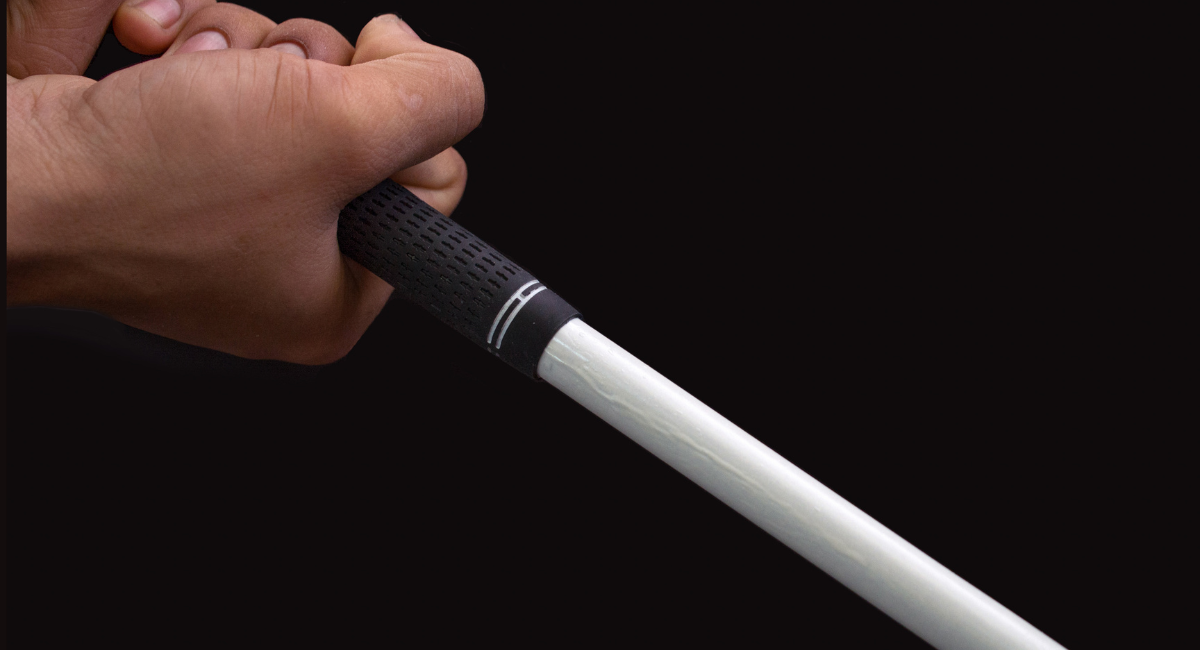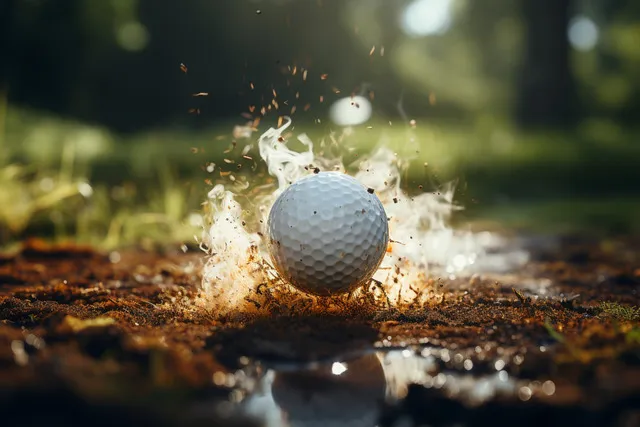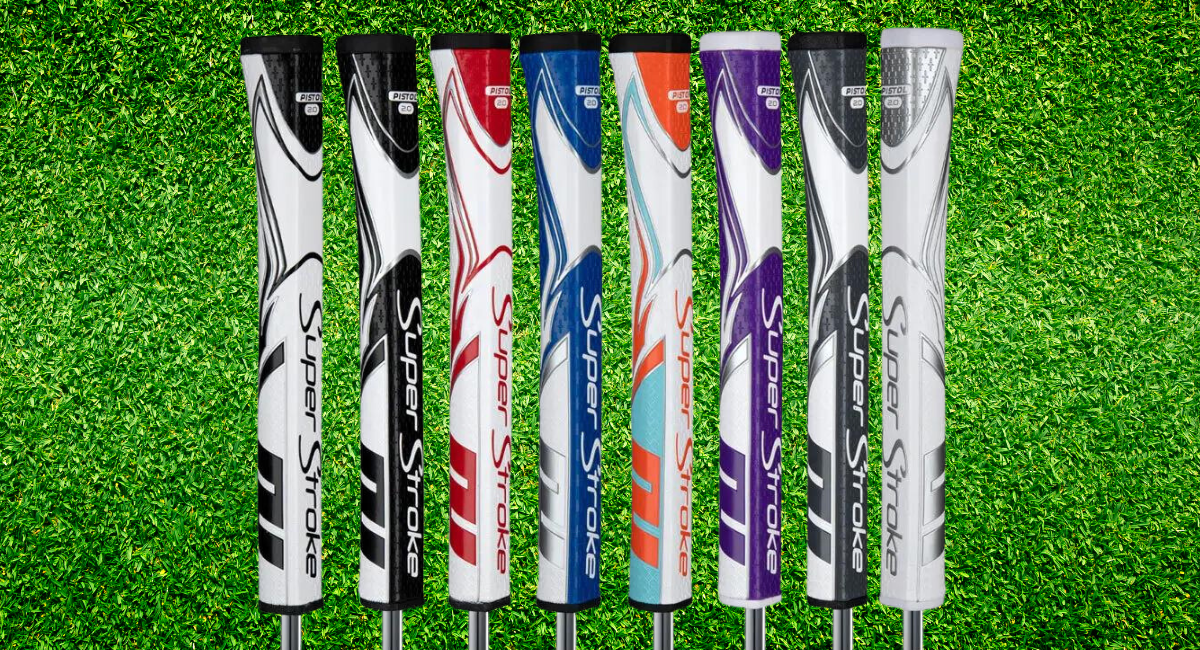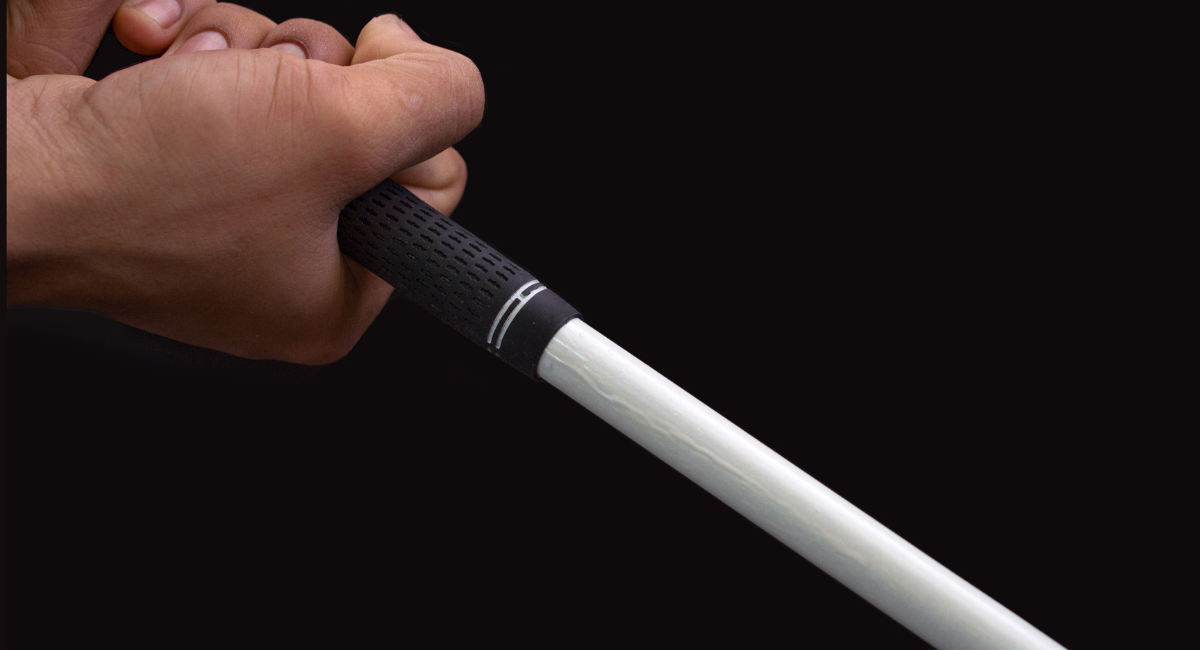How to Make Golf Grips Tacky Again


Imagine you’re lining up for the perfect shot, your concentration dialed in, the sun glinting off the fairway, and the hole in clear sight. You take a deep breath, ready to swing, but just as you’re about to make contact, your club slips ever so slightly in your hand. That minute deviation can spell the difference between a master stroke and a missed opportunity. Your grip, the literal connection between you and your club, is of paramount importance in these defining moments. If you’ve ever wondered about “how to make golf grips tacky”, then this article is your golden ticket to enhancing your gameplay.
Your golf grip’s tackiness isn’t just about maintaining a firm hold; it’s about confidence, control, and consistency every time you swing. The right golf grip ensures that your club feels like a natural extension of your arm, moving precisely how you intend it to. You don’t want to leave such a critical aspect of your game to chance.
Every second you spend with a less-than-ideal grip is a second where you’re not playing at your best. Dive into this guide and discover how to elevate your game by mastering the art of maintaining a tacky grip.
Related: Best Golf Grips for Sweaty Hands
What Does a Tacky Grip Mean?
To many, the term “tacky” might bring to mind something sticky, like tape or glue. But when it comes to the world of golf, it represents something slightly different yet equally essential.
A tacky grip in golf refers to the quality of the grip that provides optimal friction between your hand and the club. This doesn’t mean it’s sticky in a messy way; rather, it’s about ensuring that the club remains securely in your hand without any unwanted movement.
For a more tangible example, consider when you shake someone’s hand. A firm, confident handshake, where both palms have a solid grip, feels different from a limp one where the hands just slide past each other. Similarly, a tacky golf grip ensures that when you hold your club, there’s a firm, confident connection, ensuring that the club doesn’t rotate unintentionally or slip during your swing.
Why should you care? Because every tiny detail, like the quality of your grip, can radically affect your shots. If your club moves even a fraction of an inch during your swing due to a non-tacky grip, it can send your ball veering off course. For you, this means the difference between landing on the green and ending up in the rough, bunker, or even worse, out of bounds.
How to Make Golf Grips Tacky Again
Here are the 4 best ways to make golf grips tacky:
-
Use grip enhancement solutions
-
Regularly clean your golf grips
-
Use homemade grip solutions
-
Regripping
Golf grip manufacturers recognize the importance of tackiness. When golf grips are initially designed and produced, a certain degree of tackiness is incorporated into them. This is done to ensure golfers can maintain a firm, consistent grasp on the club during their swing. The intent is clear: to provide you with the best possible connection to your club, reducing unintentional movements that can throw off your shot.
However, over time and with regular use, even the best golf grips can lose their tackiness. Factors such as exposure to sunlight, rain, sweat, and the natural oils from your hands can erode that initial tackiness, making the grip feel more slick and less secure.
Similarly, older golf grips that have seen a fair amount of play can naturally wear down, leading to reduced tackiness. Think of it like a pair of your favorite golf shoes; they might start off perfect, but with time and use, they wear out, and the grip on the soles isn’t what it used to be.
Different golf grip materials have varying levels of tackiness after repeated use. Here’s how some of the most common materials compare:
-
Cord: Cord grips are highly durable and maintain their tackiness even after extended use. However, some golfers find cord grips to be less comfortable compared to other materials.
-
Rubber: Rubber grips are a popular choice because they feel familiar and are widely available. However, they can lose their tackiness over time and feel a little cheap.
-
Leather: Leather grips are known for their durability and classic look. They can also be quite tacky, especially when new. However, they may lose some of their tackiness over time.
-
Synthetic: Synthetic grips are designed to mimic the feel of natural materials like leather while providing better durability and resistance to weather. They can be quite tacky and maintain their tackiness well over time.
Let’s explore the various ways you can ensure your golf grips are as tacky as you desire, offering you the perfect handshake with your club, swing after swing.
1. Using Grip Enhancement Solutions to Achieve the Perfect Tackiness
If you’re looking to make your golf grips tacky swiftly and effectively, grip enhancement solutions are your go-to answer. They are often the first port of call for most golfers. These products are specifically designed to restore or enhance the tackiness of golf grips, ensuring you have optimal control over your club.
For beginners navigating this terrain, understanding how to effectively use these solutions can make a noticeable difference in your game.
-
Types of Grip Enhancement Solutions:
-
Tacky Spray for Golf Grips: These are by far the most popular and user-friendly. Designed for quick application, the best tacky sprays can revitalize your grip in seconds, making them a favorite among many golfers. The “Tourna Grip Rx Tacky Spray” is a popular choice among golfers. It’s easy to use, dries quickly, and gives a noticeable improvement in grip tackiness.
-
Wipes: Much like the wet wipes you might use for cleaning, these come pre-soaked in a grip-enhancing solution. Products like the “Gorilla Gold Grip Enhancer” are tacky towels infused with grip-enhancing solutions. By simply wiping your grip with these towels, you impart a layer of tackiness. They’re portable and can be easily stashed in your golf bag.
-
Lotions or Gels: These are applied directly to your hands and not on the grip. They enhance the friction between your hand and the grip without leaving a residue on the club.
-
Golf Grip Tapes: These are adhesive tapes designed for golf grips. When wrapped around your grip, they add an additional layer of tackiness. The CHAMPKEY WRAP-LITE 40 is an excellent choice for golfers. It’s known for its comfortable feel and improved tackiness.
-
-
Benefits of Using Grip Enhancement Solutions:
-
Instant Results: Especially with products like the best golf grip tacky spray, the effects are immediate, allowing you to continue your game without long interruptions.
-
Portable: These solutions are compact, making them easy to carry and ensuring you can enhance your grip even on the go.
-
Customizable: You decide the degree of tackiness. Apply more or less based on your personal preference.
-
2. Regular Cleaning of Golf Grips
Natural oils from your skin, residues from the sunscreen you applied earlier, the sweat from an intense round, or even the grime from that accidental drop on a muddy path—all of it can accumulate on your grip. Over time, this accumulation acts as a barrier, dulling the innate tackiness of your golf grip and forming a slippery layer between you and your club.

Different golf grips, whether they’re made of rubber, synthetic, corded, or leather, all have their unique textures and grooves designed for maximum comfort and tackiness. But dirt, being the sneaky culprit it is, finds its way into these very grooves. The result? A compromised, less grippy grip.
Cleaning your grip not only refreshes it but can restore its inherent tackiness. So, what should you use? For most golf grips, especially rubber and synthetic ones, a mixture of mild soap and warm water works wonders. Dampen a cloth with this mixture and gently scrub the grip from top to bottom. For corded grips, you might want to use a soft-bristle brush to reach those embedded dirt particles.
However, if your grip is leather, you’ll need to be more cautious. Leather can dry out, so it’s best to use specialized leather cleaners or, at the very least, limit the amount of water exposure.
And how often should you clean your golf grips? For avid golfers who hit the course or the range frequently, cleaning your grips every couple of weeks is a good rule of thumb. But even if you’re a casual golfer, giving your grips a gentle cleaning once a month can make a world of difference.
Beyond the immediate tactile benefits, regular cleaning prolongs the life of your grips. By removing agents that can degrade the grip material over time, you’re essentially adding more life to your favorite clubs.
3. Homemade Grip Solutions

The beauty of golf, much like life, is that sometimes the best solutions are the simplest ones. When you’re in a tight spot and need a quick remedy to add tackiness to your golf grips, your own home might offer surprising answers. Let’s explore some common household items that can bring life back to your club grips.
-
Hairspray: Hairspray contains polymers and solvents that, when sprayed onto a surface, can leave it slightly tacky as it dries. By lightly misting your golf grip with hairspray and allowing it to dry, you essentially create a thin film over it, which increases friction and enhances the tackiness.
-
Window Cleaners: Window cleaners often leave a slightly sticky residue behind, which can boost your grip’s tackiness. Spray a little onto a cloth, wipe down your grips, and you might just feel that extra grip during your next swing.
-
Vinegar: Dampen a cloth with some vinegar, rub it onto your golf grips, and after a few minutes, you’ll notice an enhanced tack. It’s a subtle change, but one that can make all the difference in a close game.
-
Soda: Sounds bizarre? Trust me, it works. I once accidentally spilled some cola on my club, and after cleaning it off, I noticed the grip felt tackier. It’s the sugary residue of the soda that lends this effect. Dip a cloth into a small amount of any carbonated soft drink, gently rub it onto the grip, and let it dry.
Now, while these remedies have proven helpful to me over the years, there are a few pointers to keep in mind:
-
Grip Material: Different materials respond differently. Rubber grips tend to be quite receptive to these homemade solutions, while corded or synthetic ones might react differently.
-
Temporary Solution: Remember, these are makeshift solutions. They’ll give you that added tack, but it won’t last forever. For long-term results, consider grip sprays or even re-gripping.
-
Experiment with Caution: Before going all out, try a patch test. Apply the solution to a small part of the grip to ensure it doesn’t react adversely.
4. Regripping Golf Grips
Having spent countless hours on the green, I can attest to the unparalleled feeling of a fresh, tacky grip. While grip sprays and homemade solutions offer temporary relief, there’s nothing like the assurance and control of a brand-new grip.
Re-gripping is the process of removing your old golf grip and replacing it with a new one. It’s like giving your trusted club a makeover. Re-gripping breathes new life into your club, offering you a grip that feels just as tacky, if not more, as the day you first held it.
The market today offers a plethora of grip materials, each with its own unique feel and advantages:
-
Rubber Grips: The most common type, they provide a consistent feel and are durable. Their inherent tackiness can be enhanced further with specific textures or patterns.
-
Corded Grips: These are designed for those who often play in wet conditions. The cord fabric, embedded in the rubber, provides an extra layer of traction, ensuring that even in rain, your grip remains steadfast.
-
Wrap Grips: Made from softer materials like leather or synthetic variations, they offer enhanced comfort. They mold to your hand’s shape over time, providing a customized feel that’s undeniably tacky.
-
Polyurethane Grips: These are softer and known for their comfortable cushioned feel. They often come with added textures for that essential tackiness.
Signs That It’s Time to Replace Old Gold Grips:
-
Texture Changes: If your grips, once soft and cushioned, now feel hard and glossy, they’ve lived their prime.
-
Visible Wear and Tear: Look for cracks, splits, or areas where the grip has worn thin. These are glaring indicators of a grip that’s seen better days.
-
Loss of Tackiness: Despite cleaning and using tacky sprays, if your grip continues to feel slippery, it’s signaling a replacement.
-
Frequent Adjustments: If you find yourself constantly adjusting your hold mid-swing or gripping harder to maintain control, your grip’s natural tackiness might be fading.
-
Uncomfortable Vibrations: A good grip absorbs the shock of the ball’s impact. If you begin to feel an unusual vibration traveling up the club into your arms, it’s likely due to an aging grip.
Conclusion
Ensuring your golf grips remain tacky isn’t just about enhancing performance; it’s about reaffirming a commitment to excellence and safeguarding your connection to the game. The journey of discovering how to make golf grips tacky again unravels layers of understanding about equipment care, player safety, and, ultimately, about refining every swing’s potential.
So, as you step onto the green next time, remember the value of that firm, confident hold on your club. Dive into the techniques we’ve shared, use the best golf grip tacky spray, and experience the difference firsthand. In the realm of golf, excellence is crafted in the details, and a tacky grip is one detail you certainly won’t want to overlook. Here’s to enhanced swings, perfect putts, and the joy of a game well-played!

Patrick Mahinge is a golf enthusiast and the chief editor of Golf Pitches, a website that delivers innovative and data-driven golf product reviews. With a keen eye for detail and a passion for the sport, Patrick has transformed Golf Pitches into a trusted source of information for golfers worldwide. Patrick's expertise lies in his ability to dissect complex golf equipment and present his findings in an engaging, easy-to-understand manner. His reviews are not just informative, but they are also backed by rigorous data-driven methodologies, making them a trusted resource for golf enthusiasts and professionals alike..


